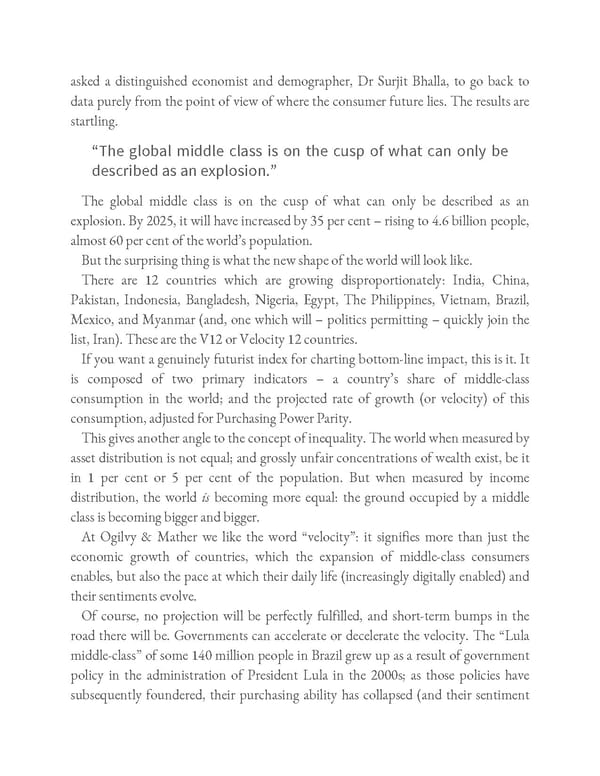asked a distinguished economist and demographer, Dr Surjit Bhalla, to go back to data purely from the point of view of where the consumer future lies. The results are startling. “The global middle class is on the cusp of what can only be described as an explosion.” The global middle class is on the cusp of what can only be described as an explosion. By 2025, it will have increased by 35 per cent – rising to 4.6 billion people, almost 60 per cent of the world’s population. But the surprising thing is what the new shape of the world will look like. There are 12 countries which are growing disproportionately: India, China, Pakistan, Indonesia, Bangladesh, Nigeria, Egypt, The Philippines, Vietnam, Brazil, Mexico, and Myanmar (and, one which will – politics permitting – quickly join the list, Iran). These are the V12 or Velocity 12 countries. If you want a genuinely futurist index for charting bottom-line impact, this is it. It is composed of two primary indicators – a country’s share of middle-class consumption in the world; and the projected rate of growth (or velocity) of this consumption, adjusted for Purchasing Power Parity. This gives another angle to the concept of inequality. The world when measured by asset distribution is not equal; and grossly unfair concentrations of wealth exist, be it in 1 per cent or 5 per cent of the population. But when measured by income distribution, the world is becoming more equal: the ground occupied by a middle class is becoming bigger and bigger. At Ogilvy & Mather we like the word “velocity”: it signifies more than just the economic growth of countries, which the expansion of middle-class consumers enables, but also the pace at which their daily life (increasingly digitally enabled) and their sentiments evolve. Of course, no projection will be perfectly fulfilled, and short-term bumps in the road there will be. Governments can accelerate or decelerate the velocity. The “Lula middle-class” of some 140 million people in Brazil grew up as a result of government policy in the administration of President Lula in the 2000s; as those policies have subsequently foundered, their purchasing ability has collapsed (and their sentiment
 Ogilvy on Advertising in the Digital Age Page 434 Page 436
Ogilvy on Advertising in the Digital Age Page 434 Page 436